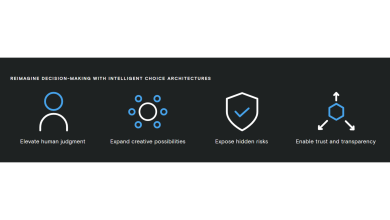
The problem with static roles
Most job descriptions were designed for a slower world. They fix duties, box in ownership, and define success through narrow outputs. Work no longer moves at that speed. The World Economic Forum’s latest skills outlook shows that core skill sets will keep shifting at pace and that the mix of what people need to do is changing materially this decade. The headline is simple. Companies cannot treat roles as containers for labour if the contents keep evolving.
Static roles also drain motivation. When people cannot see progress, they stop stretching. In many firms the only formal feedback loop is the annual review. That is too slow for real learning and it misses the small wins that power engagement.
The alternative is to treat every role as a platform for growth. You design work so that capability increases by doing the work itself. This is where agentic HR comes in.
From management to partnership
Traditional HR manages employment. Agentic HR architects the learning conditions that let people manage themselves. The core idea is straightforward. Every employee should have a smart partner in the flow of work that helps them capture intent, make better choices, and reflect on outcomes.
The technology is already in the hands of your teams. Microsoft’s Work Trend Index reports widespread use of AI at work and links it to time saved and quality gains when adopted with clear guardrails. The lesson is not to automate judgement. The lesson is to pair human intention with a co-pilot that reduces friction and surfaces the next best step.
Think of HR not as a compliance centre but as the system designer that makes this partnership real. The goal is a visible cycle of intent, action, and reflection that sits inside everyday tools rather than outside them.
Inside a growth role
A growth role is defined by how fast a person improves and how that improvement compounds value. Three loops make it practical.
Intent capture. People set a near term learning intent and a longer trajectory for their role. This lives as data, not as a static form in a forgotten folder.
Adaptive suggestions. The co pilot nudges the next step. It might propose a five minute micro lesson, a stretch task, a peer to shadow, or a better way to summarise a weekly update. Each nudge is small. Together they build momentum.
Reflection and feedback. After key actions the system prompts a short note on what worked and what did not. That note trains the co pilot and creates a personal memory for future use.
These loops turn work into practice. You are not asking people to learn after hours. You are shaping the job so that learning happens during the job.
How AI co pilots make it real
Co pilots should live where work already happens. That means chat, documents, code, tickets, and task boards. The system watches patterns, respects privacy settings, and offers context aware prompts.
An engineer who struggles to communicate progress might get a template for a weekly note and a quick simulation to test clarity. A marketing manager preparing a pitch might get a five point checklist and a suggestion to rehearse against a synthetic audience. A new people manager might receive two questions to guide one to one rather than a long script.
The point is amplification. The co pilot mirrors progress back to the person in a way they can see. It turns soft skills from invisible effort into visible signals. It also gives leaders a truer view of how capability is evolving across teams.
Governance and trust
People facing AI must earn trust. That starts with shared governance. HR and technology leaders should set rules for data minimisation, explainability, and bias monitoring. They should also be clear on when AI recommends and when a human decides.
Two reference points help. The EU AI Act introduces a risk based approach with specific duties for higher risk use cases and transparency expectations for generative systems. This shapes how enterprises should document and oversee AI that touches employees.
The NIST AI Risk Management Framework provides practical guidance on mapping risks, measuring impacts, and governing models over time. It is vendor neutral and it emphasises continuous monitoring rather than one time checks.
Enterprises can also look to the new ISO and IEC standard for AI management systems. ISO IEC 42001 formalises how to build and audit an AI management system that accounts for ethics, safety, and quality. It gives HR and the CAIO a shared language for policy and assurance. (ISO IEC 42001 overview).
Transparency is non-negotiable. Employees should know what inputs the co pilot uses, how suggestions are generated, and how to contest an outcome. Clear purpose and clear boundaries build adoption.
A simple thirty day pilot
You do not need a new platform to start. Choose one team. Ask each person to set one development intent that also supports a team metric. Connect an existing AI assistant to your collaboration and task tools. Then run a very short operating rhythm.
Week one. People define intent and log a baseline. Managers clarify what decisions or outputs matter this month.
Weeks two and three. The co pilot sends two or three small prompts per week. People log quick reflections. Managers run a fifteen minute team debrief on what helped and what did not.
Week four. Measure three things. The quality of the targeted output. The speed to complete the related tasks. The number of useful insights captured in reflections. Decide what to scale.
This approach aligns with what many employees already prefer. Shorter learning moments in the flow of work and managers who coach rather than only evaluate. LinkedIn’s 2025 Workplace Learning Report highlights the move toward continuous skill building, the importance of manager support, and the growth of internal mobility as a retention lever.
Metrics that matter
Agentic HR succeeds when personal progress and company outcomes move together. Three measures show you are on track.
Insight frequency. Count the useful insights captured in reflections. Useful means the note changed a decision, improved a draft, or helped a peer. If insight frequency rises, learning is alive.
Decision quality. Track a small set of recurring decisions and rate quality against clear criteria. Over time the aim is fewer reversals and cleaner trade offs.
Mobility and time to trust. Measure moves across teams and the time it takes for a person to be trusted with higher stakes work. If the system helps people transition faster, you are compounding value.
These measures are practical and do not require new bureaucracy. They ask teams to look at the substance of work rather than just the surface of activity.
The human edge in an AI economy
AI can generate options at scale. Only humans can connect those options to intent, values, and context. That interpretive capacity is the core of reflective intelligence. As the tools accelerate, reflection becomes the balancing force that keeps judgement sound.
The best results come from human and machine working together. Studies through 2024 and 2025 make the same point from different angles. AI boosts productivity, but the highest gains appear when people frame the problem well, verify outputs, and learn from the feedback loop. The Work Trend Index and similar research echo this. The winning pattern is human led, AI supported, and systemically reflective.
What to do next
Pick one team and one metric. Give everyone a co pilot in the tools they already use. Ask for one clear intent per person. Run short weekly debriefs. Measure insight frequency, decision quality, and time to trust. Share what you learn.
When you do this well, the culture starts to change. Work turns into practice. Practice turns into capability. Capability turns into compounding value.
Static roles tell people who they are at hire. Growth roles help people become who the business needs next. That is the promise of agentic HR and it is a promise you can start keeping now.



